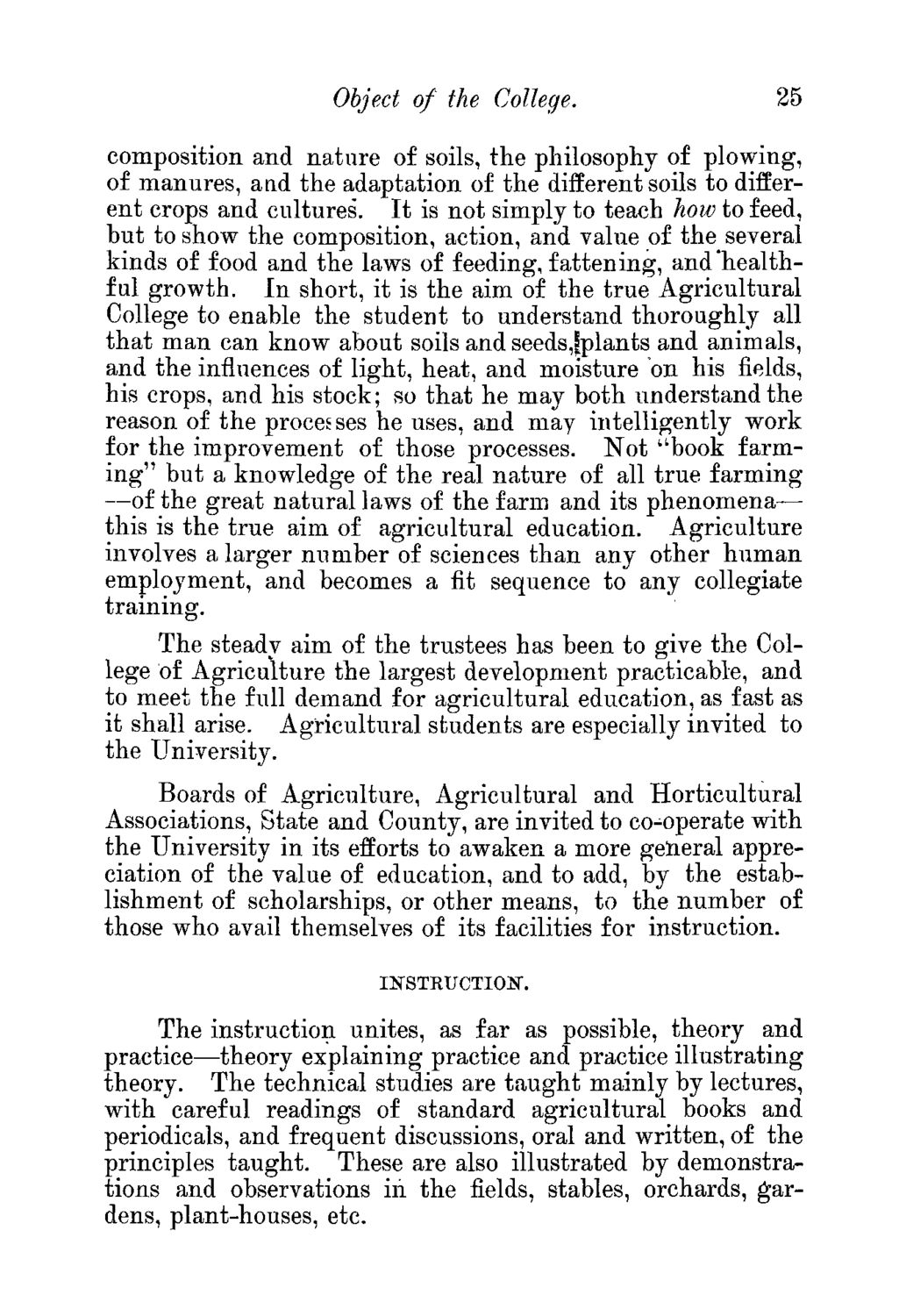| |
| |
Caption: Course Catalog - 1885
This is a reduced-resolution page image for fast online browsing.

EXTRACTED TEXT FROM PAGE:
Object of the College. 25 composition and nature of soils, the philosophy of plowing, of manures, and the adaptation of the different soils to different crops and cultures. It is not simply to teach how to feed, hut to show the composition, action, and value of the several kinds of food and the laws of feeding, fattening, and'healthful growth. In short, it is the aim of the true Agricultural College to enable the student to understand thoroughly all that man can know about soils and seeds,|plants and animals, and the influences of light, heat, and moisture on his fields, his crops, and his stock; so that he may both understand the reason of the proces ses he uses, and may intelligently work for the improvement of those processes. Not "book farming" but a knowledge of the real nature of all true farming —of the great natural laws of the farm and its phenomena— this is the true aim of agricultural education. Agriculture involves a larger number of sciences than any other human employment, and becomes a fit sequence to any collegiate training. The steady aim of the trustees has been to give the College of Agriculture the largest development practicable, and to meet the full demand for agricultural education, as fast as it shall arise. Agricultural students are especially invited to the University. Boards of Agriculture, Agricultural and Horticultural Associations, State and County, are invited to co-operate with the University in its efforts to awaken a more general appreciation of the value of education, and to add, by the establishment of scholarships, or other means, to the number of those who avail themselves of its facilities for instruction. INSTRUCTION. The instruction unites, as far as possible, theory and practice—theory explaining practice and practice illustrating theory. The technical studies are taught mainly by lectures, with careful readings of standard agricultural books and periodicals, and frequent discussions, oral and written, of the principles taught. These are also illustrated by demonstrations and observations in the fields, stables, orchards, gardens, plant-houses, etc.
| |